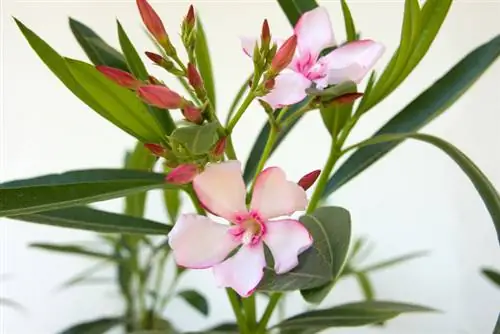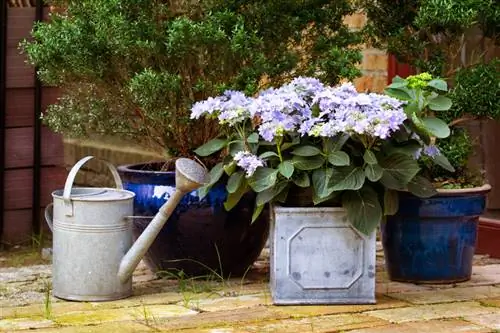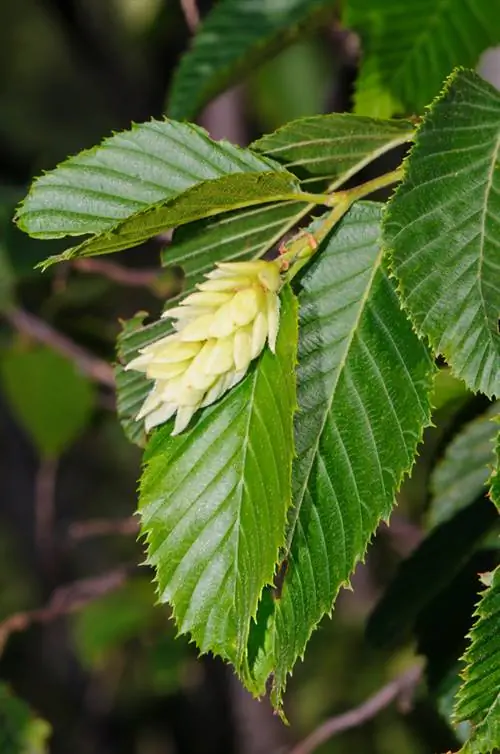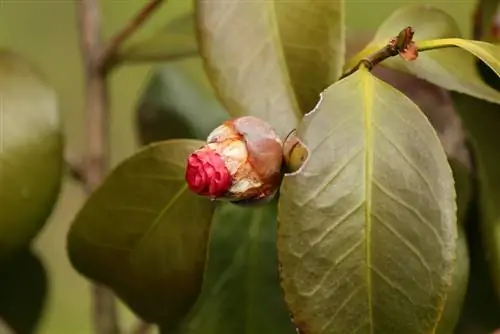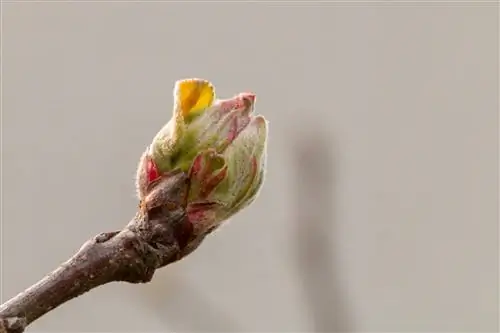- Author admin [email protected].
- Public 2023-12-16 16:46.
- Last modified 2025-01-23 11:20.
Unfortunately, oleander is one of the very sensitive ornamental plants and is susceptible to various diseases and pests. The plant, which comes from the Mediterranean region, also reacts quite sensitively to unfavorable weather conditions and other disturbances. In many cases, this sensitivity is particularly noticeable on the buds and flowers.
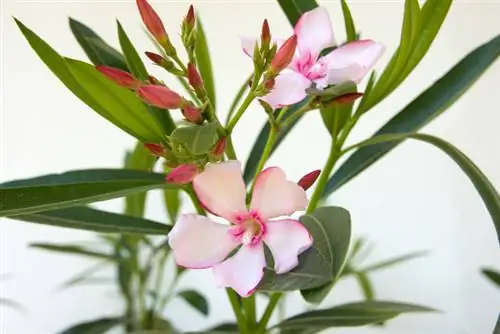
What are the causes of oleander buds not opening or falling off?
If oleander buds do not open or drop, it may be due to unfavorable conditions such as cold, wet or insufficient sunlight. Black, hard buds indicate fungal infections that can be prevented with a pesticide.
Oleander flowers often fail in wet and cold summers
If the oleander has formed many beautiful buds, but they take their time to open or are simply dropped, it is probably too cold and wet for the plant to bloom. In order to bloom, oleanders need a lot of sun and warmth - and also the right kind of moisture, namely from below. The Mediterranean plant, on the other hand, doesn't like rain at all - especially in combination with a lack of or insufficient heat. In such a case, the only thing that helps is to wait for better weather or to place the oleander in a bright and warm winter garden.
Black, hard buds often indicate fungal infection
Sometimes, however, the weather is not the cause of the flower failure. Black, hard buds, for example, are usually an indication of a fungal infection, to which the oleander is unfortunately very susceptible. You can only prevent such an infection by spraying a plant protection product in good time, which is ideally done in autumn and before moving to winter quarters. If the disease has already broken out, the only solution is to cut it back to he althy wood.
Be careful when applying pesticides: test first
Oleander is particularly sensitive to some oil-based pesticides. Before use, read the instructions for use and the application instructions carefully: Many packages already state which plants the product is not suitable for. With other products, first try a small area to see whether your oleander can actually tolerate this product.
Tip
Before you finally remove your oleander from its winter quarters, you can first move it into a warm room. However, you should install additional plant lamps because the shrub needs a lot of light, especially for the formation of buds and flowers. Finally, move the early oleander into the garden between the beginning and middle of May.

